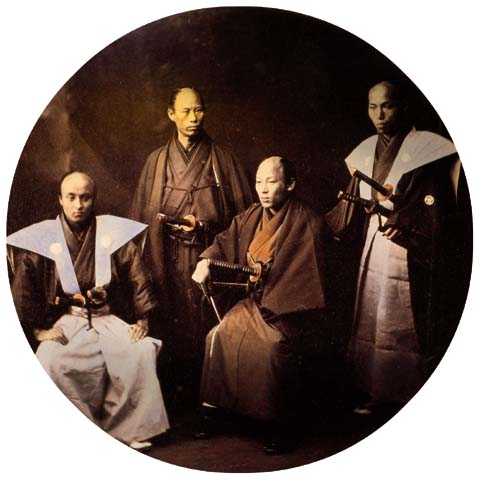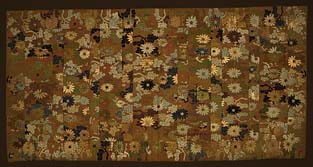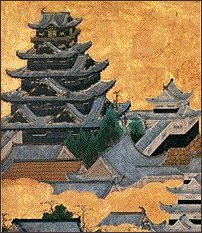|

Bafuku
After centuries
of infighting, Japan had finally arrived at a time of peace. This
peace was a bit more than coincidental, however. The Tokugawa Bakufu
and the shogun went to great lengths to ensure public order and,
more importantly, obedience from the daimyo. They decreed that for a
man to be called a 'daimyo' he must have an annual income of at
least 10,000 koku (a koku was defined as the amount of rice
needed to feed one man for one year). The daimyo were then divided
into three classes. The first class, the shinpan, were the
"related" daimyo; this class consisted of members of the Tokugawa
clan. Second, there were the fudai, or "hereditary" daimyo,
who had been loyal to Ieyasu before the Sekigahara War of 1600.
Lastly, there were the tozama ("outer") daimyo, who had only
joined Ieyasu during the war, and even some who had been enemies
during the war.

The Bakufu reorganized the land in Japan with stability in mind.
They claimed about a quarter of the farmable land (land was measured
not in area but in koku) to be the shogun's realm. The rest was
divided as follows: the shinpan were given the lands closest to the
shogunal realm, since they could be trusted to protect the interests
of the Tokugawa regime. The fudai, who were also believed
trustworthy, were granted lands in the central part of Japan.
Lastly, the tozama were sent to the outer reaches of Japan, from
whence they would be powerless to revolt against the government.
This did not stop them from enjoying their domains, however;
examples of castles raised by the tozama during this time are
Kumamoto castle, Saga castle, Fukuoka castle, Kokura castle,
Matuyama castle, Imabari castle, Mtue castle, Tuyama castle,
Himeji castle, Senndai castle,
Hirosaki castle, and many others.
Lastly, one final measure used to weaken the daimyo was a law that
required every daimyo to spend several months every year at Edo. The
large sums of money required for these trips weakened them
financially, and their absence from home hurt them politically.
Laws on Castle Construction
 The
1615
seige on Osaka Castle proved to be
more difficult for Tokugawa Ieyasu's forces than he anticipated, and
perhaps as a result the Bakufu soon issued a new set of laws. These
laws were called the "Ikkoku Ichijoo" and the "Buke Sho Hatto", and
they were meant to regulate the castle-building power of teh daimyo.
Ikkoku Ichijoo required that exactly one castle be in each province
for each ruler ruling in that province. All extra castles were
required to be abandoned. Because of this law, several of the more
modern castles disappeared, and the majority of the older castles
were dismantled. Those smaller, older castles had been given to
vassals living in a daimyo's domain, but now owning a castle became
a privilege reserved only for the daimo himself. The
1615
seige on Osaka Castle proved to be
more difficult for Tokugawa Ieyasu's forces than he anticipated, and
perhaps as a result the Bakufu soon issued a new set of laws. These
laws were called the "Ikkoku Ichijoo" and the "Buke Sho Hatto", and
they were meant to regulate the castle-building power of teh daimyo.
Ikkoku Ichijoo required that exactly one castle be in each province
for each ruler ruling in that province. All extra castles were
required to be abandoned. Because of this law, several of the more
modern castles disappeared, and the majority of the older castles
were dismantled. Those smaller, older castles had been given to
vassals living in a daimyo's domain, but now owning a castle became
a privilege reserved only for the daimo himself.
"Buke Sho Hatto", or "Rules for Martial Families" dealt mostly
with daily living, but there is one clause pertaining to castles. It
states that any daimyo wishing to build or repair a castle must
first obtain permission from the Bakufu. Because of this strict
measure, some of the tozama ("outer") daimyo did not repair their
castles even if they were broken down. "Buke Sho Hatto" was revised
by Tokugawa Iemitu in 1635, and the daimyo were now permitted to
repair
yagura,
gates, and
walls without requesting
permission. But still they couldn't repair other structures or raise
new castles. As a result, there were many castles that stayed only
partially completed.
|



